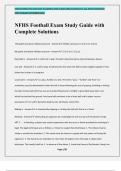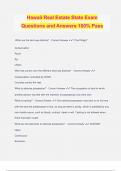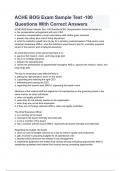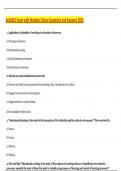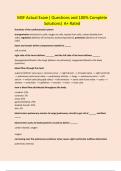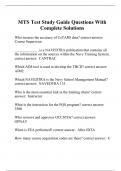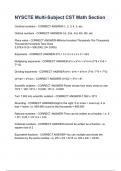Exam (elaborations)
NFHS Football Exam Study Guide with Complete Solutions
- Course
- Institution
NFHS Football Exam Study Guide with Complete Solutions 9th grade and above inflation pressure - Answer-Inflation pressure 12 1/2 to 13 1/2 psi 8th grade and below inflation pressure - Answer-12 1/2 to 13 1/2 psi Dead ball is - Answer-is a ball not in play. The ball is dead during the interval b...
[Show more]
